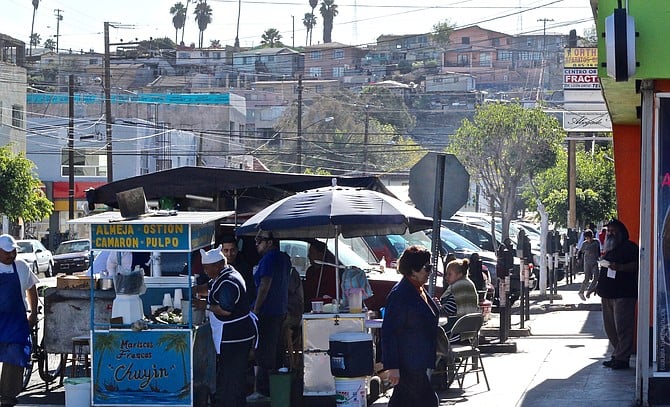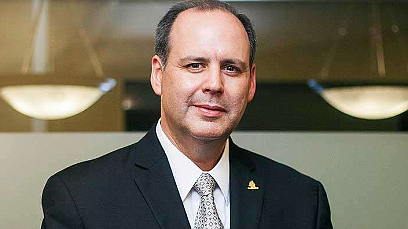 Facebook
Facebook
 X
X
 Instagram
Instagram
 TikTok
TikTok
 Youtube
Youtube

On December 16, Mexican news outlets reported of a soon to be increase in minimum wage throughout Mexico.
The National Commission of Minimum Wages (Conasami) created a new Economic Wage Zone for municipalities located within 25 kilometers south of the Mexico/U.S. border where at the beginning of 2020, the border salary will be increased by 5 percent to 185.56 pesos ($9.79 USD) per day; the rest of the country’s minimum wage will increase 20 percent: from 102.68 pesos to 123.22 pesos ($6.50 USD), per day.

Luisa María Alcalde, the secretary of Labor and Social Welfare of Mexico, reportedly said that this increase is the largest in the last 44 years, and this reduces the salary gap between men and women by almost 3 percent.
“There are countless positions here that have minimum wages registered within the [Mexican Institute of Social Security],” said Yolanda C. in response to the holiday news, “these people are drivers, gas station employees, cleaning company staff, and many more than you can imagine.”
“The minimum wage in this area is only a reference or a starting point that limits entrepreneurs to not pay less than this,” said A. Ramirez, “but realistically, in Ensenada, many workers earn 1500-2000 pesos per week working overtime to meet their minimum needs. The salary should be enough to eat, dress, educate and recreate the family according to the constitution, but in my opinion, it is still not enough.”
I spoke to Ramirez, a small business owner, the day before Christmas. He travels back and forth to the U.S. to visit his relatives on the holidays.
“Calculate that in dollars and you will see the difference when crossing to the United States,” he said.
“Let’s be objective,” argues Yolanda, “for more than 40 years, the increases were 4-5 percent maximum, and 20 percent is still insufficient — yes — but steps are being taken and fixing issues like this is not easy.”
The president of the Mexican Employers Confederation (Coparmex), Gustavo de Hoyos Walther, reportedly said that this is good news for the country, businessmen and workers, as it represents “the most important increase in real terms registered since 1988, since it exceeds 19 percent of the wellness line.”
The news was shared hundreds of times on the social media apps as Aguinaldo neared.
By Christmas, the comments piled underneath the shared news reports.
“For many people who earn minimum wage,” Juan Salazar said on Facebook, “it would be approximately 120 pesos ($6.30 USD) extra in their weekly pay, and believe me, for them, that’s a lot.”
“And because inflation has not risen, so this is a real increase,” Marcos D. responded, “not like in previous years where our salaries increased 10 percent and inflation 30 percent.”


On December 16, Mexican news outlets reported of a soon to be increase in minimum wage throughout Mexico.
The National Commission of Minimum Wages (Conasami) created a new Economic Wage Zone for municipalities located within 25 kilometers south of the Mexico/U.S. border where at the beginning of 2020, the border salary will be increased by 5 percent to 185.56 pesos ($9.79 USD) per day; the rest of the country’s minimum wage will increase 20 percent: from 102.68 pesos to 123.22 pesos ($6.50 USD), per day.

Luisa María Alcalde, the secretary of Labor and Social Welfare of Mexico, reportedly said that this increase is the largest in the last 44 years, and this reduces the salary gap between men and women by almost 3 percent.
“There are countless positions here that have minimum wages registered within the [Mexican Institute of Social Security],” said Yolanda C. in response to the holiday news, “these people are drivers, gas station employees, cleaning company staff, and many more than you can imagine.”
“The minimum wage in this area is only a reference or a starting point that limits entrepreneurs to not pay less than this,” said A. Ramirez, “but realistically, in Ensenada, many workers earn 1500-2000 pesos per week working overtime to meet their minimum needs. The salary should be enough to eat, dress, educate and recreate the family according to the constitution, but in my opinion, it is still not enough.”
I spoke to Ramirez, a small business owner, the day before Christmas. He travels back and forth to the U.S. to visit his relatives on the holidays.
“Calculate that in dollars and you will see the difference when crossing to the United States,” he said.
“Let’s be objective,” argues Yolanda, “for more than 40 years, the increases were 4-5 percent maximum, and 20 percent is still insufficient — yes — but steps are being taken and fixing issues like this is not easy.”
The president of the Mexican Employers Confederation (Coparmex), Gustavo de Hoyos Walther, reportedly said that this is good news for the country, businessmen and workers, as it represents “the most important increase in real terms registered since 1988, since it exceeds 19 percent of the wellness line.”
The news was shared hundreds of times on the social media apps as Aguinaldo neared.
By Christmas, the comments piled underneath the shared news reports.
“For many people who earn minimum wage,” Juan Salazar said on Facebook, “it would be approximately 120 pesos ($6.30 USD) extra in their weekly pay, and believe me, for them, that’s a lot.”
“And because inflation has not risen, so this is a real increase,” Marcos D. responded, “not like in previous years where our salaries increased 10 percent and inflation 30 percent.”
Comments